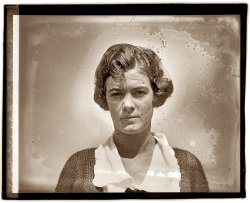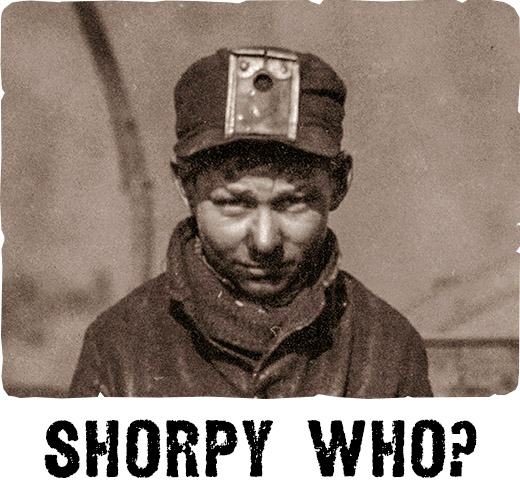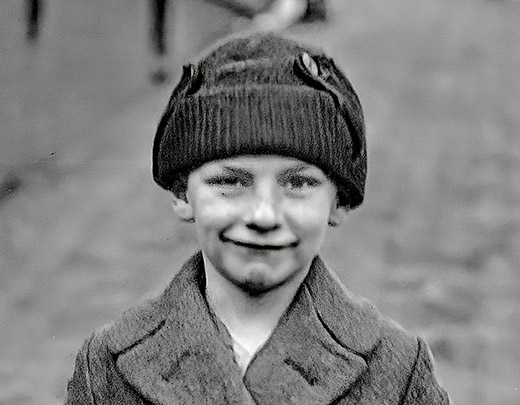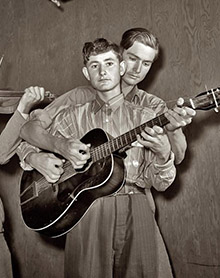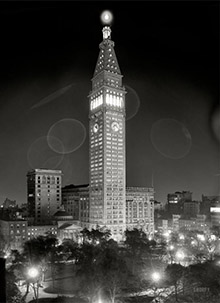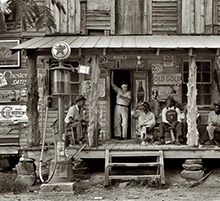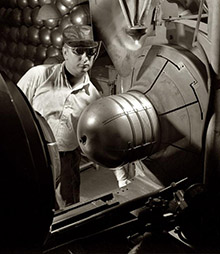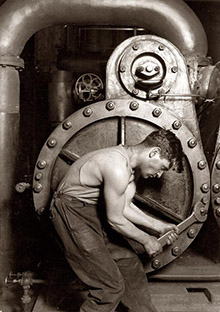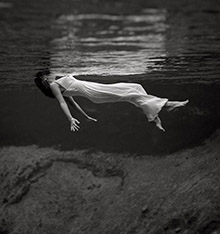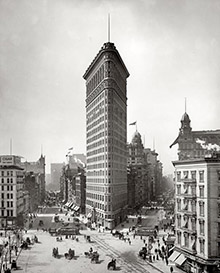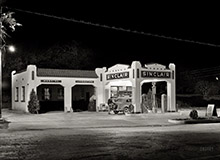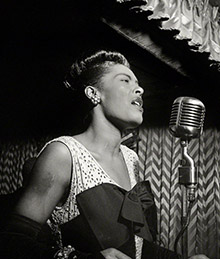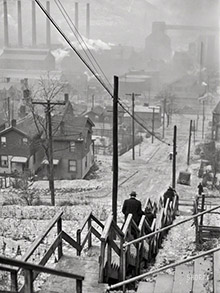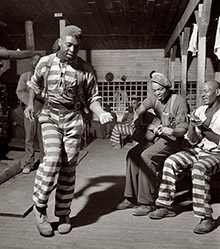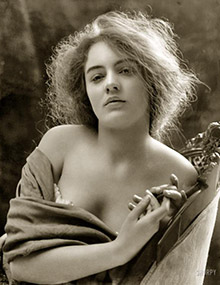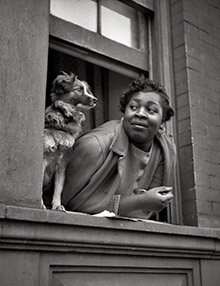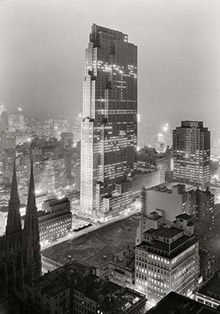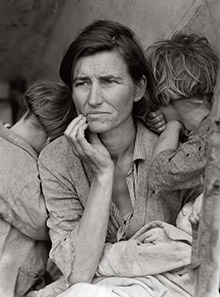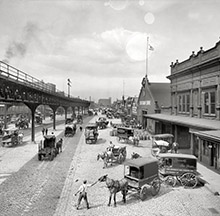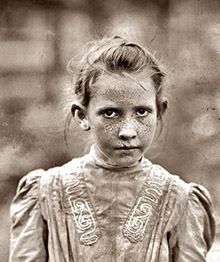
MAY CONTAIN NUTS

Search Shorpy
SHORPY ART
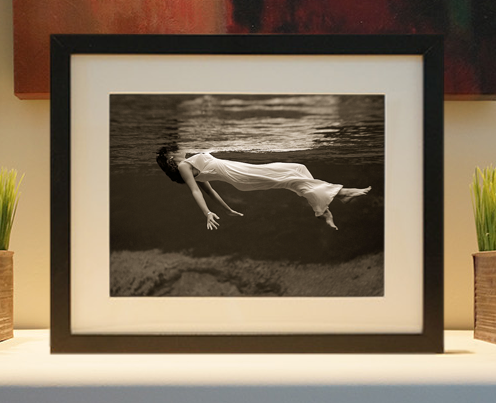
Framed or unframed, desk size to sofa size, printed by us in Arizona and Alabama since 2007. Explore now.
Join and Share
Ad-Free Shorpy
Shorpy is funded by you. Patreon contributors get an ad-free experience.
Learn more.

Recent comments
- I wondered the same thing.
- The location in 2009
- Pill Pusher
- Roll your own
- Rugged and real!
- Civil War history
- Early EV?
- A Charles Purcell - Mama Cass Connection
- Uncle SAAM
- Obfuscation
- One Chocolate Soldier rode away
- Victor Marquis de la Roche
- The Little House Across Way ...
- Vanderbilt Gates
- Vanderbilt Mansion
- You can still see that gate
- Withering heights for me
- So Jim,
- Top Heavy
- Re: Can't Place It.
- Bus ID
- Since you mention it
- The White Pages ?
- Moonlight Tower
- 1907?
- Fire(men) and Water
- Can't Place It
- Can anyone
- Wings
- Where's Claudette and Clark?
Member Photos
The Shorpy
Printporium
Printporium
Search Shorpy
Search results -- 30 results per page
- The Swamp: 1920
- Washington, D.C., circa 1920. "Government Printing Office, H and North Capitol Streets N.W." ... the same today ... but with a lot more infill of modern office construction in the immediate surroundings. And no more awnings.
... Posted by Dave - 11/10/2021 - 5:08pm -
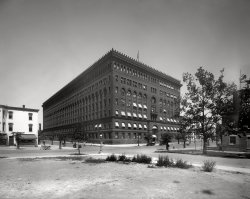
- Ninth and H: 1920
- Washington, D.C., circa 1920. "9th & H Streets N.W." Home to the National Photo Company, whose work ... just went to google maps for the above scene, I prefer the 1920 view, the present location has lost a lot of futuristic memories.
... years he had his own contracting firm. In later years his office was at his home address, 908 9th st. nw.
He was one o the original ... Posted by Dave - 02/19/2014 - 9:37am -
![Ninth and H: 1920 Washington, D.C., circa 1920. "9th & H Streets N.W." Home to the National Photo Company, whose work is well represented here on Shorpy, and whose neighbors we've seen here and here. National Photo Co.glass negative. View full size.
Yikes !just went to google maps for the above scene, I prefer the 1920 view, the present location has lost a lot of futuristic memories.
Towers still there; domes aren'tStreet View shows that the towers of what is now the Greater New Hope Baptist Church are still there - though they are today missing the spiffy domes.
However, I was curious about the Star of David that's visible in this photo, atop the building's central dome (the central dome is still there today). A look through the Greater New Hope Baptist site's history page reveals that the building originally housed the First Washington Hebrew Congregation.
Chicken wire treesI initially thought the chicken wired trees were to deter squirrels, but the saplings encased in wooden boards suggests protection more from horses.
[Horses in both cases. -tterrace]
Glass negativesPerhaps one of the photogs of this site could explain why glass negatives were still in use in 1920.
[Because photographic film in 1920 was not very good. - Dave]
William B. Fowler, Contractor
Washington Post, January 23, 1910.
Builders and Contractors
WM. B. FOWLER — Contractor. Concrete Pavements, Driveways, Cellar and Stable Floors, Walks, Steps, and Copings. Old Buildings Removed. Excavating, Walls Tarred. 9th and H st. nw. Phone Main 4973
Washington Post, January 10, 1955.
W. B. Fowler Dies;
Former D.C. Builder
William B. Fowler, 84, former building contractor, died Saturday at Georgetown University Hospital. A native of Washington, he lived here all of his life. For more than 50 years he had his own contracting firm. In later years his office was at his home address, 908 9th st. nw.
He was one o the original members of the Redman's lodge here. Many of the smaller storefronts along 7th st. nw. were built by Mr. Fowler. …
Washington Hebrew CongregationAlthough the building that is now Greater New Hope Baptist Church is on the site of the first WHC building, it is actually the synagogue's second building. In 1863, WHC bought the building of the Methodist Episcopal Church, then on the site. It was demolished and replaced by the current building in 1897.
This is the view of the 1897 building from the WHC website.
(The Gallery, D.C., Kids, Natl Photo, Stores & Markets)](https://www.shorpy.com/files/images/SHORPY_31162u.thumbnail.jpg)
- Revenuers: 1920
- Washington, D.C., circa 1920. "Internal Revenue income tax story." National Photo Company Collection ... that. I need to have a radio on to work. So what does this office need? A Victrola with headphones by each desk.
What would happen ... the sprinklers??
(The Gallery, D.C., Natl Photo, The Office) ... Posted by Dave - 09/13/2011 - 10:00pm -
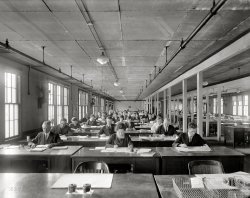
- Reliable Shoe House: 1920
- Washington, D.C., circa 1920. Hahn's shoe store at Seventh and K streets N.W. View full size. ... handled by the firm. The fixtures are of oak, and the office cashier's box, and wrapping counter in the front of the main salesroom ... Posted by Dave - 09/03/2012 - 11:52am -
![Reliable Shoe House: 1920 Washington, D.C., circa 1920. Hahn's shoe store at Seventh and K streets N.W. View full size. National Photo Company Collection glass negative.
Hahn'sThe building still exists, and the shoe store closed only about 10-12 years ago. I used to buy all my shoes there, including my first grown-up shoes for my first job, for a law firm across the street.
That is neatI would give my bottom dollar to have seen what new-old-stock they had available when they closed down. Size 8 please...
Hahn Shoes: 1891 The Washington Post, Oct 13, 1891
William Hahn & Co. Formally Open Their New Establishment
William Hahn & Co. celebrated the occupation of their new place of business at 930 and 932 Seventh street yesterday and last night be a formal opening, that was attended by great crowds of people. The new building, which was demanded by the increasing trade of the firm, was built expressly for them. It is a beautiful structure, three stories high, and every available foot of space is devoted to the large assortment of goods handled by the firm. The fixtures are of oak, and the office cashier's box, and wrapping counter in the front of the main salesroom are an innovation on the usual methods of construction. The fixtures, for both gas and electricity, are black and form a pleasing contrast to the thousands of white boxes containing shoes. ...
Hahn Shoe DCThe corner occupied by Hahn is the SW corner of Seventh Street and Massachusetts Avenue NW. K Street goes west to Seventh and stops at Mount Vernon Square, where Carnegie City Library was built. K restarts west of Ninth Street all the way to Georgetown.
[This is Seventh and K, not Seventh and Mass. - Dave]
Hahn'sHahn shoes ware the best. Someone should start a Facebook for all Hahn's-related stuff.
You Are HereThe address is also in the medallion on the corner of the building.
The old hotfootHahn's shoe store was destroyed by a five-alarm fire on December 12, 1937.
Luther Reason RayI found a design by architect Luther Ray while researching him in the Library of Congress archives. It appears to have been either a plan for a remodel of a this building or one for a replacement. Do we know if it was ever built?
(The Gallery, D.C., Natl Photo, Stores & Markets)](https://www.shorpy.com/files/images/30556u_0.thumbnail.jpg)
- The Healing Waters: 1920
- Washington, D.C., circa 1920. "Walter Reed Physiotherapy story." National Photo Company Collection ... the potential of going down in Shorpy history much like Office XMas Party 1925 and Dickey Christmas Tree 1921. From Lyle Lovett in a ... Posted by Dave - 12/04/2020 - 10:44pm -
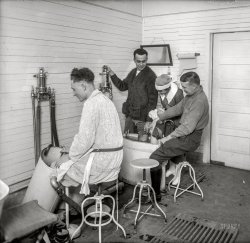
- America's First Car: 1920
- ... view of the building shortly after its completion in 1920. National Photo Company glass negative. View full size.
Haynes ... day at work. There is a man bent over in the front office (window on the left).
Auto-Biograph This building later became ... Posted by Dave - 04/26/2011 - 1:23pm -
![America's First Car: 1920 "Wayne Smith Auto Co., front." Mr. Smith went to Washington, and built this dealership at the corner of M and 22nd. A street view of the building shortly after its completion in 1920. National Photo Company glass negative. View full size.
HaynesNot only America's finest, but also its first.
First with the FinestDoesn't it say "America's First Car," not "Finest"?
[Oops. Fixed! - Dave]
Wayne's Haynes!Sorry, I couldn't resist the rhyme!
Haynes was no cheapieThe 1920 Haynes 12-cylinder, 4-door roadster was listed at $3250. That's more than 37,000 2011 dollars. Wayne Smith would have had to look for another line in a few years, though, since Haynes went out of business in 1924.
Just another day at work.There is a man bent over in the front office (window on the left).
Auto-BiographThis building later became the Biograph theater, showing old movies and art films. Went out of business with the advent of the VCR.
Not The BiographWhile similar in appearance this is not the building that became the Biograph Theater which is actually about 6 blocks west on M street from where this building once stood.
America's First Car? Not!I have never before seen Haynes as being credited with being America's first car.
This honor goes to Duryea who by the close of 1896 had produced 13 automobiles (along with several prototypes), won a race in Chicago in 1895, and also the inaugural London to Brighton Run in 1896.
According to wikipedia, Haynes only produced five cars in 1898 (the first year of production shown).
The first Duryea is from 1892/1893 while the first Haynes is from 1894.
(The Gallery, Cars, Trucks, Buses, D.C., Natl Photo)](https://www.shorpy.com/files/images/29316u.thumbnail.jpg)
- Wired: 1920
- ... "Interior Department, Bureau of Mines." Another circa 1920 view of research activities at the bureau's Washington offices. Harris ... Sheesh, why don't people wear eyeshades in the office anymore? So cool! Whatever happened to them? Kinda like hats? Always ... Posted by Dave - 09/12/2011 - 1:00pm -
![Wired: 1920 "Interior Department, Bureau of Mines." Another circa 1920 view of research activities at the bureau's Washington offices. Harris & Ewing. View full size.
Fire!That looks like a fire waiting to happen. It also sort of looks like PVC tubing in there. I wonder what the white pipes are made of? They are too thin and smooth to be covered in asbestos.
[Galvanized steel electrical conduit -- Crouse-Hinds "Condulet." - Dave]
SpaghettiNo tie-wraps? What a mess.
Electricity. Water. Scared.Where's OSHA when you really need them?
Reminds me of one of my first jobs.It was a kitchen where the only way to change the bulb in the light fixture was to actually stand IN the sink. If it blew during business hours, there was no turning the breaker off because that would plunge the dining room into darkness as well.
Yeah, I know, we have laws to prevent that sort of thing, but they're pretty meaningless in small towns where people are desperate for any job they can get to keep a roof over their heads.
PuzzleI'm a mechanical engineer and have been around research laboratories most of my life. It's fun trying to figure out what he's up to. I would guess the tub of water is a constant-temperature bath for the cylindrical vessels. It has a thermometer poked in it. The vessels have lids, with wire penetrations, for closure before submersion. The long rods and motors are probably for stirring the submerged vessel contents also through the lids. They might be combusting something in the vessels and then measuring the time-changing temperature with thermocouples. However, I don't see a thermocouple potentiometer. Maybe they're somehow using what look like resistor boxes on the researcher's desk. Research can be messy as this photo aptly demonstrates. With the water and electricity so intertwined, it looks like an acident waiting to happen.
Electroplating?With all the wires and big tank of water it looks like an electroplating experiment in process.
Behave!"Don't you dare explode while the photog's here!"
EyeshadesSheesh, why don't people wear eyeshades in the office anymore? So cool! Whatever happened to them? Kinda like hats? Always there and then one day just gone? Can we bring them back? Please?
Precious metal assay This is what is happening here....
"The invention describes a method for determining the assay of gold alloy. It utilizes a dynamic electrochemical process. The specimen gold is wetted by a described electrolyte, and a small current anodizes the surface of the specimen for a metered period of time. A potential sensing device is then applied to the charged surface, and a potential decay is observed. The potential decay information is compared with empirical data and by interpolating said potential decay with the empirical data a determination of the karat quality of the gold alloy may be determined. This same method may be used for other precious metals, employing different electrolytes, empirical standards, and potentiometers."
(The Gallery, D.C., Harris + Ewing, Mining)](https://www.shorpy.com/files/images/14231a.thumbnail.jpg)
- A Little Philately: 1920
- Nov. 30, 1920. Washington, D.C. "Charles M. Schwab, of the Kalorama Apartments, probably ... an educated guess that this kid's father worked in a big office and brought home all of these stamps for him.
[Speaking as a ... trove that was. My Aunt from New York worked in an office which received a large amount of foreign correspondence. She would save ... Posted by Dave - 01/06/2014 - 4:58pm -
![A Little Philately: 1920 Nov. 30, 1920. Washington, D.C. "Charles M. Schwab, of the Kalorama Apartments, probably has the largest collection of stamps in the East. This is a pile of approximately two million." National Photo glass negative. View full size.
Hey look at this!I would wager that posing him this way was the photographer's idea. I once saw a newspaper photographer talk two boys into posing INSIDE a huge pile of leaves they had raked up. The photo got published.
RelationsThis is not the nephew of steel magnate Charles Michael Schwab. The kid appears to be the son of Frederick and Molly Schwab. In 1930, age 21, he was still living at home and working as a bookkeeper. But you coulda guessed that.
Stamp accumulationA thin line separates collecting from accumulating. I think this kids just crossed that line. 90% of the stamps piled here are from the Franklin (1cent) / Washington (3cent) series which where the common stamps of the day at that time and are worthless (with some exceptions) today. Because most of the stamps are still attached to the envelop paper they were sent on, I can make an educated guess that this kid's father worked in a big office and brought home all of these stamps for him.
[Speaking as a fellow sometime-philatelist, I'd say the album indicates he also has a real stamp collection. -tterrace]
Charles Schwab? Did getting go on to found a brokerage firm? Or was that his son?
[No relation. -tterrace]
But:Is this not a rather odd way to display your collection, valuable or not?
Nephew of American steel magnate?Charles Michael Schwab (1862-1939) was an American steel magnate. Not related to the founder of the brokerage firm Charles Schwab Corporation
He had a namesake nephew, the son of his brother Joseph. Could this be who this is? This boy certainly has the elder Charles Michael Schwab ears.
Stamp Collecting DazeI started collecting stamps around 1957, when I was ten, when my parents bought me an orange cloth bag of foreign stamps from the local 5 & 10 store for a dollar. The stamps were still on the envelope paper like Chuck's. You had to soak them off with water. Lots of duplicate general postage stamps from the UK. My grade school collected US postage stamps and sent them to a company which bagged them up for sale overseas. Some of the girls in my class sorted these stamps and gave me the foreign stamps which the company did not want. One time I was given a large amount of foreign stamps which someone had taken out of a stamp collection and donated to the school. What a treasure trove that was. My Aunt from New York worked in an office which received a large amount of foreign correspondence. She would save up the stamps and mail them to me. One of my boyhood friends had a grandfather who collected stamps for years and who would buy sheets of stamps and store them away. When I saw the collection of these sheets from the 1920's through the 1940's (including zeppelin airmail stamps) it was like entering King Tut's tomb. Back in these early days of my collecting, the US Postal Service issued very few commerative stamps each year. As the US and other counties began to issue large numbers of commerative stamps each year, my interest in collecting waned, however I still have my collection.
Not as funI stopped collecting stamps - I'm collecting email headers now.
(The Gallery, D.C., Natl Photo)](https://www.shorpy.com/files/images/SHORPY_20680u.thumbnail.jpg)
- Weather Report: 1921
- ... that the Washington Times is in a much more modest office, right next door.
Radio School 1920 At first I thought this photo was taken the same time as the 'Radio ... Posted by Dave - 08/28/2012 - 3:54pm -
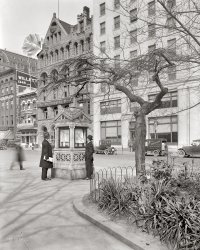
- Patriotic Poriferan: 1920
- Feb. 25, 1920. Washington, D.C. "Herbert J. Drane, Congressman from Florida, is from ... to be the largest sponge market in the world. Mr Drane's office gives the appearance of a permanent sponge exhibit. The walls are ... Posted by Dave - 01/15/2016 - 8:54pm -
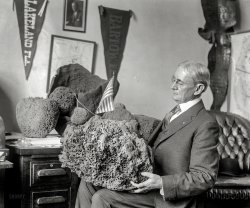
- Hidden Dangers: 1920
- Washington, D.C., 1920. "Dixie Theater crowd, H Street." Now playing: "Hidden Dangers" (Episode ... and other things The lobby cards to the left of the box office appear to be for "Humbugs and Husbands", a Larry Semon Vitagraph comedy ... Aubrey M. Kennedy.
Hidden Dangers was a 15 part 1920 serial directed by William Bertram that critic George Ralph Doyle called ... Posted by Dave - 08/13/2013 - 4:32pm -
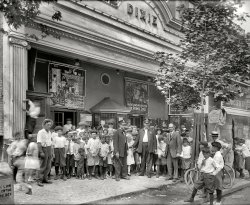
- Oakland Tribune: 1920
- Oakland, California, circa 1920. "Offices of the Oakland Tribune ." The premises of the late lamented ... Burroughs . -tterrace]
(The Gallery, Christmas, The Office) ... Posted by Dave - 04/25/2016 - 8:02pm -
![Oakland Tribune: 1920 Oakland, California, circa 1920. "Offices of the Oakland Tribune." The premises of the late lamented newspaper (1874-2016) are now home to a bar, the Tribune Tavern. 8x10 glass negative by the Cheney Photo Advertising Co. View full size.
Dipso-JournalismNot to perpetuate what is probably an urban myth, but I wonder how many years it will take for the Tribune Tavern to dispense as much alcohol as was consumed just during work hours by the stalwart hacks of this great paper during its run?
So much to seeSo many intriguing items in this lovely chamber: the designs on the hanging lamps; the ornamentation visible as the eye rises up the columns and walls toward the ceiling; the man in the fedora leaning on the marble counter; the pigeon holes under the counter; the bald man, slightly blurry, looking forlorn, staring at the camera; the heavy book in front of him; the grim woman with downcast eyes working the machine on the threaded stand; the sole Christmas decoration (the wreath in the far window). All the men are lounging or motionless, while all the women are busy and working.
What kind of machine is that?The lady in the aisle: is that an early adding machine or a ticker tape machine? I know that smart-rear ends Shorpians will be able to enlighten me.
[An adding machine, possibly this Burroughs. -tterrace]
(The Gallery, Christmas, The Office)](https://www.shorpy.com/files/images/SHORPY-957A.thumbnail.jpg)
- Looking the Other Way: 1920
- Washington, D.C., circa 1920. "Standard Engraving building, 1212 G Street." Looking down the street ... by other stores), St. Patrick's Church and the Patent Office Building (now the National Portrait Gallery) can all be seen. Below is ... Posted by Dave - 09/13/2011 - 4:23pm -
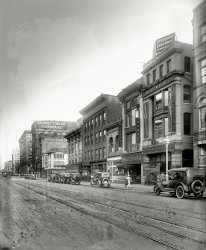
- S&M Tires: 1920
- Washington circa 1920. "S&M Tire Co." I can think of a number of possible slogans for this ... of a personal training gym, hair salon and tax preparation office. Draw your own conclusions.
Wow 5,000 mile tires! I'd be buying ... Posted by Dave - 09/11/2011 - 9:39pm -
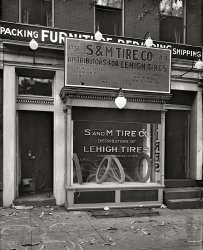
- Meet the Beetles: 1920
- July 1920. Washington, D.C. "Dr. H.B. Bradford." Professor Harry Bradford, ... two weevils, of course.
(The Gallery, Natl Photo, The Office) ... Posted by Dave - 02/10/2014 - 7:26pm -
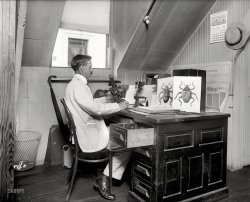
- Fill In the Blanks: 1931
- ... to Sign Land Patents," a position in the Government Land Office which, since its creation under President Arthur, has been held only by ... about 1878 (making her about 53 in this photo), and the 1920 and 1930 censuses show she lived in Washington, D.C. The 1920 census ... Posted by Dave - 04/20/2013 - 9:03pm -
![Fill In the Blanks: 1931 UPDATE: The photo now has a caption.
Signs the president's name. Mrs. Leafie E. Dietz, recently appointed the "Secretary to Sign Land Patents," a position in the Government Land Office which, since its creation under President Arthur, has been held only by women. She signs "Herbert Hoover" to land patents and is the only person who has authority to sign the President's name.
Washington circa 1930. The document at hand in this unlabeled Harris & Ewing negative is a form ready for the signature of Herbert Hoover. Perhaps someone versed in bureaucratic history will recognize this lady. View full size.
CylindersCould they be for sending messages through a pneumatic tubing system?
The Mysterious CylindersThe Land Office probably trafficked in large documents -- maps and such. The cylinders might have to do with storing, transmitting or duplicating them. They look too long to be dictation cylinders or radio batteries.
Difficult JobCan you imagine how difficult it must have been for a woman in those days to be part of the White House staff? I love her glasses and her very direct, no nonsense look. There is a small star on her ring. I imagine someone will recognize its significance.
I bet those flowers wiltedThe moment she sat next to them.
Possible identificationI'm not sure, but I think that might be Ed Wynn.
A woman before her time?It looks like she was married and had a successful career, too!
Not an Ordinary Worker BeeWell dressed, with a fat engagement/wedding ring combo and what looks like an Order of the Eastern Star ring.
Job DescriptionThe document is a form of the General Land Office, predecessor to the Bureau of Land Management; the lady is authorized to sign the President's name as described in a caption accompanying a 1937 Harris & Ewing photo of another lady in what may be the same room:
Signs president's name. Washington, D.C., Sept. 8. Affixing the signature "Franklin D. Roosevelt" to land grants and patents, Jeanne [...], 20, is getting a great thrill out of her new [...]h the General Land Office. As "Secretary to the President [...]ning Land Grants and Patents," she is the only [...] authorized to sign the president's signature to documents. She is the youngest person ever appointed to the position. 9/8/37
Cylinders????What are the tall cylindrical objects against the wall? If we could identify them it might give us a clue as to what department she works in. The labels on them are far too out of focus to read.
Soil samplesSince this is a land management office, the tubes might well be soil sample cores. Contemporary tubes are a similar size and shape.
[The Land Office didn't have anything to do with dirt. - Dave]
Pot MarigoldThe flowers appear to be the common calendula officianalis, or the more common name of pot marigold. A popular cut flower back in the day, it has the unusual characteristic of sleeping, or folding up at night time. Much used in present day lotions and fragrances.
Re: Cylinders?My first thought, as well, but aren't they awfully long canisters? The required bend radius in the pneumatic lines would be huge!
Her name is Leafie E. DietzAfter a fun little search these past couple of hours, I've discovered her identity. It is Leafie E. Dietz, designated by President Hoover in 1931 to sign land patents, by Executive Order 5529.
This photograph shows the preparation of a land patent granted to Janie Furr, for 640 acres of land in two sections (8 and 17) in Grant County, New Mexico, dated Jan. 21, 1931.
The most exciting part was the hunt! I work in land administration, so I immediately recognized the document as a patent or similar document.
I rotated the image and messed with the contrast to try and read the document. I immediately recognized a chunk of the writing as a legal description. At first, I couldn't make out much, but after recognizing the words "New Mexico Meridian" (23rd Meridian) and "six hundred forty acres", I was able to discern the township and range: T16S R15W (or "Township sixteen south of Range fifteen west" as it is written on the patent). From there, I did a simple search of the BLM's land documents using the legal description, which pulled the original patent (fully filled out by that point!) image with matching description! (attached below, original accession # 1043289).
Stupidly, I did not look down at the signature block, and attempted to locate the identity of this woman through a search of the congressional registry for 1931. After searching the GLO's employees, as well as the executive office's employees (thanks to the hint from Dave's comment), I was not able to find anything further...until...
I took another look at the patent, and voila! How blind could I be?! There, under "Herbert Hoover"'s signature, is the notation "By Leafie E. Dietz, Secretary." It's her!
A quick Google search turns up the executive order by Pres. Hoover designating her to sign land patents, and also some results regarding her involvement with the Order of the Eastern Star (in Colorado, apparently), as hinted by her ring.
A search on Ancestry.com returns census records, indicating she was born in Iowa about 1878 (making her about 53 in this photo), and the 1920 and 1930 censuses show she lived in Washington, D.C. The 1920 census lists Joseph, Dorothy and John as children (22, 16 and 14 respectively). Interestingly, it also shows George working as a law clerk in the Land Office, but Leafie with no occupation. She must have started the position after the children were grown, perhaps hearing of the opening through her husband. Joseph is listed as a stenographer.
Also see the image below of a snippet from the New York Sun, (Jan. 13, 1931, only days before the Shorpy photo above!) highlighting her new post.
A fun way to pass a couple of hours! I love research/genealogy (and land records!). I'm glad I found this site!!
Wow!Wow, jordannelson, that's an amazing piece of sleuthing. Good thing Mrs. Dietz has long departed this vale of tears, or Mr. Dietz might accuse you of stalking his wife.
Petworth Lady
Washington Post, May 25, 1954.
Mrs. Dietz Dies; Worked at Interior
Mrs. Leafie E. Dietz, 78, who put the signatures of two presidents to homestead land grants as part of her job at the Interior Department, died yesterday at the Washington Sanitarium. She lived at 8424 Queen Anne's dr., Silver Spring.
After her husband, George C. Dietz, an Interior Department lawyer, died in 1929, Mrs. Dietz was appointed a clerk in the General Land Office of the Interior Department. There she was legally empowered to sign land patents for homesteaders with Presidential signatures. She served under Herbert Hoover and Franklin D. Roosevelt.
Mrs. Dietz, who retired in 1944, moved to Washington in 1918. She was a native of Keokuk, Iowa, and was married in Silver Cliff, Colo., in 1895 during a silver rush there.
Active in the the Order of the Eastern Star, she helped found the Joppa Lodge Chapter in Petworth. She was a member of the Petworth Women's Club and the Petworth Methodist church.
Surviving are two sons, John E. Dietz of 9143 Sligo Creek parkway, Silver Spring, and Joseph M. Dietz, of Harrisonburg, Va.; one daughter, Mrs. Dorothy Trautman, of 8424 Queen Anne's dr., Silver Spring; three grandchildren and four great-grandchildren. …
(The Gallery, D.C., Harris + Ewing, The Office)](https://www.shorpy.com/files/images/SHORPY_36187a.thumbnail.jpg)
- Zero Tolerance: 1920
- Washington, D.C., circa 1920. "Bureau of Internal Revenue -- destroying narcotics." Continuing today's ... Potomac?
Can't wait for Christmas ...when the office party kicks off.
The guy on the left I too think the guy on the ... Posted by Dave - 05/17/2014 - 11:30pm -
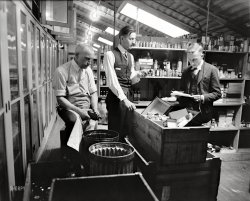
- Money Machine: 1920
- Washington, D.C., circa 1920. "Post Office money order machine." A sort of typewriter-cash register ... here $5.91 + $.08 money order fee, total $5.99. The Post Office gets to keep the 8¢. - tterrace]
Other picture? tterrace ... Posted by Dave - 08/21/2012 - 8:38pm -
![Money Machine: 1920 Washington, D.C., circa 1920. "Post Office money order machine." A sort of typewriter-cash register hybrid. Harris & Ewing glass negative. View full size.
M.O. purposeHe's making out a money order for a delivered C.O.D. parcel; that's a USPOD C.O.D. mailing tag on the ledger.
Also, talk about shallow depth of focus; looks like about 8 inches, max.
RepetitiveA little Photoshoppery shows us the details of the page in the ledger (click for larger image):
It's interesting that the amount appears numerically in two columns and spelled out in a third. I guess they *really* didn't want any misunderstandings or errors, especially with such high finance (that $8.77 to Hayes Wheel must have nearly broken the bank).
[Note also the figures in the sixth column: 05 & 08; those are the money order fees, which the recipient would have paid in addition to the amount due the sender. Apparently 5¢ for under $5 and 8¢ for over. - tterrace]
[UPDATE: the other shot taken at the time shows a money order being fed into the machine, so the spelled-out dollar amount is probably done to be imprinted on the order, and the same operation prints all the details on the ledger. - tterrace]
Money Order FormHere is the money order form he is working on.
[That's the C.O.D. mailing tag that had been attached to the parcel. It has the names and addresses for both sender and addressee along with the amount to be collected, here $5.91 + $.08 money order fee, total $5.99. The Post Office gets to keep the 8¢. - tterrace]
Other picture?tterrace references another photo that shows a money order being fed into the machine; where do I go to see that photo?
[Library of Congress online catalog here. - tterrace]
Safety pinDid anyone notice a safety pin in back of this fellow's tie? Dressing tricks have been used a very long time.
(Technology, The Gallery, D.C., Harris + Ewing)](https://www.shorpy.com/files/images/SHORPY_14324a.thumbnail.jpg)
- Canal Street: 1910
- ... so time in the early nineties I think. There corporate office had a substantial art collection that I believe is now part of the Odgen ... was moved from the pole to the awning of the store in the 1920's and both are still there today. The awning also has remarkable historic ... Posted by Dave - 08/08/2012 - 2:02pm -
![Canal Street: 1910 Canal Street in New Orleans circa 1910. Large building is the Maison Blanche department store. 8x10 glass negative, Detroit Publishing Co. View full size.
Canal and CarondeletThis photo was taken near the intersection of Canal and Carondelet. All the buildings on the far side of the street are still there, although the left side is considerably different. Fascinating stuff.
Glad-U-KumNow this is one happening street! Love the signs over the street. Can anyone ID the car heading our way? Almost looks like it's a "Glide" or "Slide" (whatever that is).
So, that's where I went wrong.Just thinking how different my life would be if I had some of those smart clothes.
Glide pathWonder why the Glide car is the only conveyance visible not powered by horse or electricity? Surely Noo Orleenz had lots of cars by 1910. Also, anybody hoping to end it all by jumping off the roof of that fantastically ornate building on the right might spend some anxious moments volleying up and down on the jungle of wiring covering much of the street. Maybe grab onto a handy gargoyle after six or seven bounces, with second thoughts about departing the Big Easy so soon.
Didn't Little Orphan Anniequote "Leapin' Lazards" ?
K&BI just wanted to comment that the drug store on the bottom left - Katz and Besthoff - became a big local chain called K&B that was like a Walgreens or CVS. It went out of business so time in the early nineties I think. There corporate office had a substantial art collection that I believe is now part of the Odgen Museum of Southern Art and the sculpture garden in City Park. I could have some of these details confused. Anybody know what the Winter Capital of America Banner draped across the street refers to?
[New Orleans! - Dave]
Who needs to drive?I see no fewer than 16 streetcars in this photo! Talk about mass transit!
"A Confederacy of Dunces"In the opening scene of John Kennedy Toole's novel, Ignatius J. Reilly stands (many years later) in front of the D.H. Holmes across the way.
Smart Clothes!Ooooh I need some because I've been feeling like a dummy lately. :P
I am so happy to see so many ladies! Normally all the ladies are MIA in Shorpy photos (already drinking afternoon tea or working?) Oh all the outfits and dresses!! *drool* Everything from fancier day/walking outfits to typical white blouse & black skirt combo for the new working generation.
And did anyone else notice the huge umbrella on a pedestal in the middle of the street? There for a rainy day?
This is beautiful!Try putting *this* in a movie today, even with CGI. I can about hear the chatter of voices, the hoofbeats, the bells on the streetcars -- I count at least a dozen streetcars just in this short stretch of street!
Little girl, in the dark dress at the far left, where's your mother? You shouldn't be out here all by yourself. (Thinking about it, that little girl was just about born with the century.)
Why is there an umbrella on a stand in the middle of the street?
Through my Grandfather's EyesWhat a wonderful photo - taken the same time my grandfather lived in New Orleans. I couldn't help wondering if he was among the busy pedestrians.
Regarding WINTER CAPITAL sign - the South has always been a popular destination for the well-to-do Northern crowds in the winter - we call them Snow-Birds. I'm sure that New Orleans with its excellent railway and boat connections was one of the most popular destinations.
FascinatingThere is so much going on in this picture, you could lose hours poring over it. Strange to think that all these people going about their daily business are no longer with us.
Katz & BestoffI also love the shot of Katz and Bestoff. This would have been their flagship store, established in 1905, although this year, 1910, a second store opened across the street at 837 Canal. K&B grew to 177 stores across the deep south, before being sold in 1997 to Rite Aid. Anyone in New Orleans still refers to K&B purple, as this started in 1908, when the owners bought a bulk lot of unwanted purple paper, and used it for wrapping, etc. Part of the K&B jingle, "Look at almost any corner, and, what do you see? A big, purple sign that says, friendly K&B!"
This is Beautiful, IndeedYup, sixteen streetcars, which, while being pedantic but wishing to throw out a bit of cocktail party trivia, I would offer do not have bells, but have gongs.
Suspect the umbrella was to shade a streetcar dispatcher or perhaps a traffic cop. It looks like high noon, so it's probably not too effective just now. Or the shadee is in to lunch!
Santa & Mr. BingleIn the early 1950s our parents would take us to Maison Blanche for photos with Santa and his buddy Mr. Bingle. MB had a really good Santa and almost 60 years later I can still remember the visits.
The smellsHave been trying to conjure up the smell of this place. Horses, rickety gasoline engines, wafts of ozone, what else is there? Must have been pretty unique, especially in those New Orleans summers.
24 hour drug store at the right. Everything old is new again. And mailbox technology has not changed at all.
Forget the umbrellaI wanna know what the closed cart (not a wagon, they have four wheels) parked in the middle of the street is.
[One way or another, something to do with horses. Watering then (note the dipper) or cleaning up after. - Dave]
Adler's TimeAdler's is a multi-generational family business selling jewelry and gifts. The store and its beautiful sidewalk clock are still there today.
A Fez-tive timeThe "GLAD=U=KUM" banner is for the Shriners' 36th Imperial Council Session in New Orleans April 12, 1910. Here is a souvenir of the occasion.
Williams' PharmacyThe four-story building was owned and run by Captain Williams who was a Civil War veteran. My great uncle, Adolph Kaczoroski was his manager for 30 years from 1895 to 1924. The building's soda fountain was especially popular.
Luzianne Coffee"Luzianne" a dialectical play on Louisianian?
[Since 1902. - tterrace]
Then and nowThe clock on a post here is in front of Adler's Jewelry Store. At the time of this picture, the location at 722 Canal Street must have been only recently opened. The original location (1898) was in the first block of Royal Street, but after a fire in about 1904, the business spent a few years at 810 Canal Street before moving to its present location where it still operates today. I think of everything you can see in this picture, Adler's is the only business this old New Orleans scene that you can still visit today and is still operated by the Adler family. In fact, the Adler family owns both the original K&B location, mentioned above in another comment (today a FootLocker,) and the Williams Pharmacy building (soon to be a pharmacy again with a historic renovation that will be done by Walgreens.) The clock was moved from the pole to the awning of the store in the 1920's and both are still there today. The awning also has remarkable historic detail with a fleur de lis motif that is hard to see in the picture here, but is definitely there.
Amazing Picture!!!
K & B DrugsstoreI remember this oh so familiar drug store. And the undeniably K & B purple. Only those from this great city know the shade of K & B purple.
Williams Pharmacy My 2nd great-grandfather, John Morin, was a druggist at Williams Pharmacy from about 1900-1913 when he died of a heart attack in the pharmacy.
(The Gallery, DPC, New Orleans, Stores & Markets, Streetcars)](https://www.shorpy.com/files/images/4a19852a.thumbnail.jpg)
- Lucky Dog: 1920
- January 14, 1920. Washington, D.C "Margaret Bell Saunders." Be a good boy and Mama won't ... a resident of 1444 W Street NW, Washington, listed as an office typist. By 1930 she had moved back to Philadelphia, listed as a ... Posted by Dave - 02/29/2020 - 9:13pm -
![Lucky Dog: 1920 January 14, 1920. Washington, D.C "Margaret Bell Saunders." Be a good boy and Mama won't have you turned into a coat! National Photo Co. glass negative. View full size.
A Smooch for MaggieNow that's a loving peck going on there.
Head warmer, gloves, a fur for the neck and good 'ol dog to keep you warm on a cold day.
It Never Happened BeforeWords escape me.
Another bully breed!This is probably what used to be known as a Boston Bull, now known as a Boston terrier. Their looks have changed a bit over the past century. Their great personality has NOT!
I might be related to her!As soon as I saw her name, it tripped a dusty memory of mine from my years of doing genealogy.
Further research might be needed, but she could (could being key) be the daughter of Lucy Swett and George Thomas Sanders.
If so, she would have been around 25 years old when this photo was taken, and would have been deaf. Her father, George would have been one of Alexander Grahm Bell's fist students (and George's father would have also been one of the primary sponsors for Bell's invention of the telephone).
It's a tenuous link, and I don't have my subscription active to where I could narrow this down, but it certainly would fit - provided George and Lucy gave two daughters the same middle name. My Margaret Sanders has a sister named Lucy Bell Sanders.
[This lady's name is Saunders, not Sanders. - Dave]
More on MargaretI was poking about the US Census revisiting this old line of mine, and Margaret Sanders (my Margaret Bell Sanders) shows as a resident of 1444 W Street NW, Washington, listed as an office typist. By 1930 she had moved back to Philadelphia, listed as a government typist.
I'm guessing somebody transcribed the caption and confused the n for a u in her name.
Here's her obituary, from 1982.
https://www.newspapers.com/clip/37708277/
(The Gallery, D.C., Dogs, Natl Photo)](https://www.shorpy.com/files/images/01034u.thumbnail.jpg)
- Milton Apartments: 1920
- Washington, D.C., circa 1920. "Milton Apartments, H Street N.W." Where the amenities include a mounting ... H St. NW, which is still there today (albeit as an office building, not apartments). You can see one of its distinctive "B" crests ... Posted by Dave - 10/13/2015 - 6:32pm -
![Milton Apartments: 1920 Washington, D.C., circa 1920. "Milton Apartments, H Street N.W." Where the amenities include a mounting block for stepping into one's carriage. National Photo Company Collection glass negative. View full size.
Oops. Someone goofed long ago.That's not the Melton. That's the Milton. The Melton was at 318 New York Ave NW, but the transom on the building on the right is 1727. No building with a 1727 number is anywhere near 318 New York.
But The Milton was at 1727 H Street NW.
Sources: 1909 Boyds Directory, 1903-1916 Sanborn Fire Insurance Map.
Both the Milton (as shown), and the Melton (whatever it looked like) have been long demolished.
[Excellent detective work. - Dave]
Mute, inglorious MiltonsAlsatian is right. And the building visible at left is The Bachelor at 1737 H St. NW, which is still there today (albeit as an office building, not apartments). You can see one of its distinctive "B" crests at top left.
Get Me Rewrite!The site is now occupied by the Editors Building (now a Hampton Inn), completed in 1950, which was listed on the National Register of Historic Places in March 2015.
I work around the cornerThe Bachelor was looking dapper this morning.
+94Below is the same view from June of 2016.
(The Gallery, D.C., Natl Photo)](https://www.shorpy.com/files/images/SHORPY-33208u.thumbnail.jpg)
- Tales of the City: 1924
- Today we're leaving the office and taking the streetcar downtown for some shopping. From 1924, "F ...
Arthur Burt Co. I found these three early 1920 ads for the Arthur Burt Co., in the Washington Post.
Lisle ribbed ... 9, 1912
Plans for the construction of a ten-story office building on F street ... When completed the new building will have cost ... Posted by Dave - 07/17/2012 - 10:15pm -
![Tales of the City: 1924 Today we're leaving the office and taking the streetcar downtown for some shopping. From 1924, "F Street N.W. from 14th Street." View full size.
Swastika Truck IIPossibly made by Detroit's K.R.I.T. Motor Co.
[Looks more like an electric truck. Maybe a Walker Electric. There's no radiator. - Dave]
Arthur Burt Co.I found these three early 1920 ads for the Arthur Burt Co., in the Washington Post.
Lisle ribbed hose, of fine texture, for women and juniors: black, white, brown, elk, gray and navy blue. Just right.
Shoes and hose of today, Arthur Burt Co., 1343 F. Dependable military footwear, "Nature-Shape" school shoes.
The "Tuiriwun," a slipper in black satin or patent leather that is correct for both evening and street wear and, consequently, much in demand. $9.00. Arthur Burt Co.
The BartholdiHey, it's the Bartholdi Cafe, offering seafood and shore dinners, inviting ladies and gentlemen, and open Sundays. I learned this stuff from a billboard next to the Texaco station.
I wondered what the "ladies and gentlemen" on the sign meant - no rowdies and ruffians, no wenches of questionable virtue? A 2005 Washingtonian article mentioned the Bartholdi (it was characterized as "early 20th century" seafood, apparently not the best).
Truck SwastikaThat truck pulling out near the guy crossing the trolley tracks has a swastika on it. Was there an automotive company that used that emblem before it was abused by the Nazis?
[Use of the swastika as a decorative motif or commercial insignia goes back long before the National Socialist Party adopted it as an emblem. - Dave]
Health Week starts April 28 1343 F St.: Arthur Burt Co.
Footwear for "society affairs," afternoon or evening.
1341 F St.: Bartholdi Cafe
Washington Post, May 30, 1923: Advertisement
This if the first holiday since we've extended our service to include the ladies. Bring them in and let them enjoy the Bartholdi famous shore dinner or a selection of the Sea Food delicacies served our way.
1339 F St.: H.W. Topham
Trunks, suitcases, traveling bags, hot boxes, etc.
1337 F St.: Watters Sterling Boot Shops
"The kind of shoes you want at the price you want to pay"
1333 F St.: Adams Building
Washington Post, Apr 27, 1924
Health Week Campaign Gets Start Tomorrow
"Health Week" starts tomorrow. Agencies participating took possession of the old Y.W.C.A. home, at 1333 F street northwest, to install free exhibits and motion pictures, which will run through the entire week. A large sign advising "Keep the Well Person Well" and "Get the Sick Person Well" placards the building, which is open from 10 a.m. to 11:30 p.m.
1331 F St.: Meyer's Shop
"Everything for well dressed Man and Boy" - Rogers Peet Clothing
1329 F St.: Franklin & Co. Opticians
1319-1321 F St.: Interstate Building
The Young Men's Shop on ground floor
Washington Post, Jan 9, 1912
Plans for the construction of a ten-story office building on F street ... When completed the new building will have cost approximately $600,000. The Interstate Commerce Commission, it is expected, will lease quarters in the new structure.
1315-1317 F St.: Baltimore Sun Building
Contemporary Photo
Washington Post, Apr 9, 1903
The Baltimore Sun building, 1315 and 1317 F street was sold yesterday afternoon at public auction to Walter Abell.....The Sun building is perhaps one of the best known office buildings in Washington and one of the most substantial in the country. ... It was built in 1887, the jubilee year of the Baltimore Sun by the founder of the paper, Mr. A. S. Abell, ...
Washington Post, Jul 12, 1987
The oldest standing skyscraper in America - maybe the first --an exquisite nine-story example of eclectic Victorian architecture, is celebrating its 100th anniversary this year. Although New York and Chicago are normally associated with skyscrapers, the oldest example is in neither city but rather in Washington -- the Sun Building at 1317 F St. NW.
...
Now restored to its original elegance, the Sun Building gives a hint of what Washington was like before the homogenizing influence of post-World War II architecture began erasing the city's history. Built by A.S. Abell, publisher of The Baltimore Sun, it originally served as a home for the newspaper's Washington bureau. Upon its completion in 1887, The Baltimore Sun Hershel Shanks, a lawyer and part owner of the Sun Building, is editor and publisher of the Biblical Archaeology Review. declared the building "the most imposing private structure in the national capital."
Safety LastDig the scaffolding set up with no safety barrier or safety roof, only a few paper signs stuck to it that probably say "Watch out for stuff falling on your head," or possibly something more appropriate for the period, like "Mind the head."
Hey, there was a cop standing on the corner in the Patent Office photo too. At least this street is safe from horse thieves.
It looks like a breezy day.It looks like a breezy day. See how the coats and awnings are billowed?
WowGreat shot. The crispness and detail in these old photos is still startling.
Frederic Auguste BartholdiHotel Bartholdi appeared in the Metropolitan Life 1908 Shorpy photo. In this one he's a Cafe for Ladies & Gentlemen. He was the sculptor of the Statue of Liberty. It's 1924 and there are no horses in this picture. Were they banned from these streets?
Checker CabsBoth of the two-tone taxis are Checkers, made by the Checker Cab Manufacturing Co. of Kalamazoo, as is the taxi in the extreme lower left hand corner. By 1924 Checker was building 4,000 40 hp cars a year at an average selling price of about $2350.
The bus's power polesThe bus's power poles are down. It must convert to gas power when overhead power lines aren't available.
[That's a streetcar, not a bus. Downtown, where there were no overhead power lines, the electrical supply was under the street. More info in the comments here and here. - Dave]
TrolleyI notice there are no overhead wires for the streetcar. Apparently it was powered from a third rail on the ground. Seems pretty risky on a public street.
[The power supply is underground. Not a rail, and not risky. - Dave]
Third rail again?Oh Dave, you have the patience of a saint. How many times must one answer the same questions regarding streetcar power. I think its overly due time for some default link to background information regarding streetcar engineering in the District of Columbia.
A few of the previous explanatory postings on Shorpy: [1,2,3]
StreetcarFor those interested, the streetcar pictured in this scene is Washington Railway and Electric Company car number 602. Built in 1912 by J.G. Brill Company of Philadelphia it was delivered on September 21 of that year. In 1912 this streetcar cost $6016.17.
In 1933 the Capital Traction Company took over streetcar operations in Washington DC and WRECo 602 became Capital Traction Co. car 836. In 1935, 836 was assigned to the Brightwood Division. By 1939, it was assigned to the Navy Yard Division, and in 1942 to the Benning Division.
The centre door meant that 836 required two-man operation - a driver, and a conductor - and by the 1940s these older, slower cars were also creating bottlenecks as the newer, faster cars lined up behind them. 836 along with the remaining centre door cars were retired in 1944 and scrapped the following year. With the retirement of these cars retired the last of Washington DC streetcar conductors, as now all the cars were one-man operation. Not only were the cars faster, they were now cheaper to operate.
One centre door streetcar, CTC 884 former WRECo. 650, is currently held by the National Capital Trolley Museum in Wheaton MD. It is currently unrestored as far as I know. See it soon for the museum is closing December 1 due to construction of the Intercounty Connector, and it is not scheduled to reopen until next summer.
Sources cited:
Peter C. Kohler, "Capital Transit, Washington's Street Cars The Final Era: 1933-1962" Bonifant MD: National Capital Trolley Museum, 2001.
National Capital Trolley Museum: http://www.dctrolley.org/
Streetcars & Hobble SkirtsThanks James for all the information about car #602. In the photo, it appears that the lower step folds up while the car is in motion.
Washington Post, Mar 20, 1923
Order Low-Step Cars
W.R.&E. Officials Accede to Demand of Women
Fifty are Now Being Built
The women of Washington have won a victory in their demand for street cars with lower steps. The Washington Railway and Electric Company has placed an order for 50 new cars with the J.C. Brill Company, of Philadelphia, specifying particularly that the cars be constructed with low steps.
The operation of the new style cars throughout the city undoubtedly will meet with the hearty approval of the women, who have been making a strenuous fight for more than two years to abolish the high steps.
The new cars are being built as rapidly as possible, and the first shipment is expected to arrive here about April 15. The cars are what are known as the Narragansett type, being semi-convertible from closed to open, of double truck, and capable of comfortably seating 80 passengers. The seats will run crosswise, and the exterior will be painted yellow.
It is announced by an official of the company that the cars will be constructed with two steps, affording easy ingress and exit from the vehicle. Upon just what lines the new cars will be operated the officials have not decided yet. A number of the cars, it is understood, will be placed on the Georgetown and Mt. Pleasant lines to replace those recently destroyed in the fire at the car barn at Thirteenth and D streets northeast, in which 80 cars were burned.
"We have ordered that the new cars be constructed with unusually low steps," said an official of the Washington Railway and Electric Company, yesterday, "as we realize that the plea of women patrons, who ask for lower car steps, is justifiable. The new cars will be constructed, in so far as the steps are concerned, to meet the approval of the women. Later in the year we will either order additional cars of the low step type, or remodel the cars now in service to comply with the request of our women patrons."
Washington Post, Apr 26, 1923
New Car Tested Here
Hobble Skirts No Barrier to Improved W.R.&E. Vehicle
"Wearers of the hobble skirts," said W.F. Ham, vice president of the Washington Railway and Electric Company, "will have no difficulty in boarding our new car, which we have just tried out for the first time. It has so many features that are new that we are delighted with it. During its trial trip yesterday afternoon, it carried no one but the officials of the company, but within a few days, we will run it in with our regular service, and then ask the passengers for their opinions. If they are favorable, undoubtedly we shall add a great many more of such cars to our rolling stock."
Bartholdi HotelMy family owned the Bartholdi Hotel. My great-grandmother was Theresa Bartholdi. There is an old family tale that Vincent Sardi of Sardi's Steak House was a cook for the Bartholdi and met his wife who was a maid there.
(The Gallery, Cars, Trucks, Buses, D.C., Natl Photo, Streetcars)](https://www.shorpy.com/files/images/11376u1.thumbnail.jpg)
- Fairview Hotel: 1916
- ... About a month ago complaints reached the health office that "Fairview" was insanitary and a menace to the health of the city. ... (son - adopted)
Webster Sutherland, 32, (brother)
1920 Census
104 Seaton Place Northeast
Keith S Sutherland, 65 ... Posted by Dave - 08/27/2012 - 1:21pm -
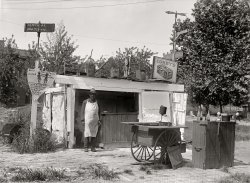
- Allied Asphalt: 1923
- ... is a study in frustration. Almost everyone else in the office is younger than he is, but he's never gotten a private office of his ...
And the graphics of the calendar are indeed very 1920's. And yes, you are right. We now know what Little Orphan Annie did when ... Posted by Dave - 07/23/2012 - 3:37pm -
![Allied Asphalt: 1923 October 1923. Washington, D.C. "Allied Asphalt Products Co." Behind all that smelly hot tar and paving aggregate, under the compacted gravel -- a hidden world of glamour and intrigue! National Photo Company glass negative. View full size.
Willie Loman ... But Even LowerThe "Company Man" at the middle desk is a study in frustration. Almost everyone else in the office is younger than he is, but he's never gotten a private office of his own. His phone is facing in the wrong direction, and not even the frizzy-haired typist will give him a good time down at Joe's speakeasy.
Meantime, he's the only economist in the whole company who's figured out that the stock market will collapse by 1929. But will the boss in the glass booth listen to a word he says, or look at his charts? No. He takes the train home to his nagging wife, who wants a new Orthophonic Victrola and a 12-cylinder Packard Cabriolet. She gives him a hard time from the minute he walks in the door, so he retreats to his den, with a bottle of bootleg hooch and a few Bix records.
Graduation DayIt appears that Princess Leia is graduating tonight. That is her graduation gown, isn't it? It couldn't be a dress, because it looks unstylish, hot, and uncomfortable. Oh wait, it was the 1920s.
Is that a telephone switchboard on her desk?
Bestcaption ever Dave!
I know this has been done before, but:Michael Scott watches over everything from his private office at the back. Sitting in front of him and slightly hung over is Meredith, with Creed telling her a surreal anecdote from his mysterious past. In the middle, Kevin is shuffling papers and trying to look busy. Off to the right, Pam gives the camera a knowing look. And at the left - whoa, waitaminute, how did Little Orphan Annie get a job at Dunder-Mifflin?!
That hair!Get your finger out of the light socket already, young lady.
Proud New Offices
Washington Post, Mar 11, 1923
Larger Offices Occupied
Asphalt Products Corporation Moves
to 919 New York Avenue.
The Allied Asphalt Products Corporation, of which Thomas J. Brown is president, last week removed their offices from the Southern building to new enlarged quarters, occupying the entire ground floor at 919 New York avenue northwest.
This corporation is regional distributor for the Keystone Manufacturing Company, York, Pa., manufacturers of asphalt shingles, waterproof paper and paint.
Re: HairUpon first glance, I assumed it to be a fur hat.
The lady on the leftlooks as though something has crawled up onto her head and died there.
Their Hair IIIOne of the girls has bobbed her hair - and it being so early in the 1920s has not yet had the opportunity to style it in marcel waves - probably just had it hacked off by a barber. By the end of the 1920s, she'd have the option of a permanent wave.
The other two are wearing their hair in the "earphone" (or "cootie garage") style, which fell out of favor by the mid-1920s as more and more girls took the plunge with the barber (or even the female hairstylist!) Once cloche hats were standard it was harder and harder to have stylish long hair!
Tight curls and bobsI've seen that kind of hair in a lot of early 1920s photos. Since I have that kind of hair myself I can see why. Most bobs were done by barbers and when hair of this texure is suddenly released from the weight of length and the constraints of hairpins -- this is the result! It took a while for people to figure out how to handle it when it is short.
Devil is in the detailsAs usual the details of an era gone by are what make this photo so special. No cubicles. Everyone sits out in the open. Two have candlestick telephones and inkwells. The others just get typewriters. (What a dreary job to type and type and never even get interrupted by a phone call). [Look a little closer. The girl on the right has not just a telephone, but an entire telephone switchboard, on her desk. - Dave]
There are paste pots by the cabinet in the corner, against the wall. Not sure what they pasted, but they apparently filed it there. Maybe it was customer addresses from invoices or letterheads. Maybe it was photos. On the wall are photos of houses they must have paved with asphalt.
And the graphics of the calendar are indeed very 1920's. And yes, you are right. We now know what Little Orphan Annie did when she grew up. She became a typist!
Look - It's Little Orphan Annie!All grown up!
That hair IIThe Princess Leia twins!
For Whom the Bell TollsJudging by the huge telephone ringer box under the desk, workers in this office suffered hearing loss early in their lives. Today OSHA would require these hapless victims to wear hearing protection.
[Maybe that explains the hair. - Dave]
RecyclingThe boss has an office made of surplus doors. If this is an example of their Southern Bldg accommodations, it's no wonder the company moved.
Colorful ScenarioThese old photographs do conjure up interesting stories from our imaginations.
Yours is particularly entertaining. Thank you for making this already-vivid photograph even more so.
Allied AsphaltSounds like one of those dubious companies that Gomez Addams was always investing in. You know, like Consolidated Lint.
Telephone boxThat big ringer was standard issue. They were all that big and metallic and LOUD. I installed one of those in a 1915 house I had (along with the candlestick phone), and it ensured that you never missed a call.
Talking on a candlestick phone sounds like you are in a submarine - the Bell Ph.D. acoustical engineers had yet to be hired.
A little Tar & AsphaltGreat title as usual. Once I saw a truck on the DC Beltway that said "If we didn't pave your driveway, it's your own asphalt."
Bless Her HeartMy heart goes out to Little Orphan Annie. In providing us with photographic evidence of the fact that the "bad hair day" is not a modern phenomenon she also has to undergo the indignity of people still laughing at it 86 years later.
This photo also proves that there is a direct correlation for women between attractiveness and the proximity to the boss' desk. (And I'd give anything to go back 86 years and chat up the cutie doubling on the switchboard.)
(The Gallery, D.C., Natl Photo, The Office)](https://www.shorpy.com/files/images/30584u.thumbnail.jpg)
- Churches of Chicago: 1942
- ... to be a Sunday. Acetate negative by Jack Delano for the Office of War Information. View full size.
The Methodist Book Concern ... Thirty: Being some relation of what happened to Chivvy (1920). You can’t make this stuff up.
Huron & Dearborn We're ... Posted by Dave - 01/27/2023 - 1:49pm -
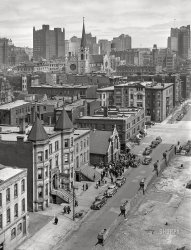
- 101 Broadway Pharmacy: 1957
- ... still exists, but the building is now a Planned Parenthood office.
Divinity candy What was that? I don't remember them. If you eat ... born in 1892. He was still living with his parents in 1920, but they are all shown as living in Wapinitia, Wasco County, Oregon.
... Posted by Cazzorla - 06/29/2014 - 5:37pm -
![101 Broadway Pharmacy: 1957 I purchased this 8 x 10 print at the swap meet. On the back is printed:
Mr. and Mrs. Cliff McCorkle, proprietors of the 101 Broadway Pharmacy, Richmond, Calif., getting an order ready for delivery. 5 November 1957. Photographer: Pfc. Barbara A. Warner, Sixth US Army Photo Lab, Presidio of San Francisco, Calif. Official US Army photograph. View full size.
"Fling"?Somebody is going to have to convince me that it's really for feet.
SquibbThey were an official ER Squibb Vitamin Headquarters. Having grown up next to the factory in Brooklyn, I recognize the 3 column logo.
My color versionI've been getting into colorizing photos. If a product name was legible, I looked up references of old packaging on google to try to get the colors as accurate as possible. Some of the hair care products and lotions I had to fudge on it because I couldn't find them, but most of the other stuff is accurate. I had a lot of fun doing it and I think the color really adds to the photo. It was my intention to get it as accurate as possible. Check it out:
https://www.shorpy.com/node/18065
ImpressedI am happy that this photo has been well received. I never thought that I'd get to see a color version, or a photo of the photographer! I have a few more pictures from this collection that I will share sometime.
Divinity memoriesAs a kid growing up in Mississippi in the 1950s, divinity was home made candy. Sugar, eggs whites, corn syrup, vanilla, sugar and pecans combined to make a divine candy. I haven't visited Mississippi in 25 years, but today there is always the hope someone will bring divinity to a church supper. Maybe I should just make some tonight.
Top GunkI can't see any in the photo, but I bet they carry Dapper Dan pomade.
S&HAnd they give out Green Stamps.
Sales no longer allowedNearly 50 years from the date on this picture, Richmond enacted an ordinance that prohibits the sale of tobacco products in establishments with pharmacies. You have to go to El Cerrito or Albany now for your nicotine fix.
Why?A very odd subject for an official Army photograph. Since Letterman Army Hospital had a complete pharmacy and all military personnel stationed at the Presidio would have had access thereto, I'm left to wonder why this shot was taken.
For Your HealthGet your Myadec vitamins here! Only $85.50 for the economy size! That amount equates to $723.86 in today's dollars!
Gone but not forgotten, until now.Clove Life Savers I guess that flavor is not popular any longer, but I do remember purchasing them in the past but not really sure why?
Coffee Time!Am I the last living human who remembers the taste of coffee-flavored candy? It was pretty good, actually.
...and is there ANYBODY who ever ate Clove Life-Savers? They musta sold okay, but yikes!
Can't rememberthe last time I saw a package of"Clorets"!
"Brusha, Brusha, BrushaWith the new Ipana."
CloveI remember clove gum, but not the Life Savers. The thing that strikes me is the great variety of 1950s cigarettes in the back--Camels, Kents, Cavaliers, Pall Malls, Marlboros, L&Ms, and Herbert Tareytons.
RepurposedAppears the address still exists, but the building is now a Planned Parenthood office.
Divinity candyWhat was that? I don't remember them. If you eat it were you guaranteed to go to heaven or were they just sold to Priests?
[Divinity. -tterrace]
Clove Lifesavers and other flavorsI remember very well getting the Lifesavers Sweet Story Book every Christmas back in the 50s. It was a book-shaped box that opened and revealed 10 rolls of Lifesavers. They always included Clove, Wint-O-Green, Butter Rum and Butterscotch, 5-flavor, Orange, and others. Clove and Wint-O-Green were my favorites, and always saved until last.
We were neighbors!I lived in Richmond in November 1957 (I was 4 at the time). I wonder if my folks ever shopped here? Shoot, maybe my mom was standing just off to the side when this picture was taken (she was always kinda shy).
Tough TownAh, Richmond. I grew up just south of there, in Albany. Always a tough place: factories, warehouses, oil refinery. Best part of Richmond for me was that it was where we got on the Ferry to San Rafael on the way to Stinson Beach most Sundays.
Looking for a certain productI was hoping to catch a glimpse of the cold and flu products near the vapor rubs, to find 4 way cold tablets. My mother swore by them for any signs of a cold coming on. Take the 4 way pill, get under a heavy blanket, and sweat the cold right out of you. And believe it not, they actually worked! Does anyone else remember them?
Old Time products!Amazing how many of those items are still available and how many are gone. I was 11 years old when that picture was taken. If it didn't say where it was from it could have been from any Drugstore in America at that time. I know there was one across from the school I went to in Chicago at the time that had that same kind of goodie rack and one closer to my house same thing.
Neighborhood pharmacy!I lived just a few blocks away from this pharmacy from birth to age 20! My folks undoubtedly knew the McCorkles! Very cool photo!
Wint-O-Green memoriesAh! The counter candy stand of my youth.
Separate comments here each touch on one part of the story, but marketing ad-speak nowadays has dropped the use of "breath-mints" as a catchall.
Yes, all those packs of cigarettes often got sold with strong breath masking mints, candies and gum.
Let me also make a nod toward the LifeSaver Sweet Story Book. At Christmas we each got one and could always identify it although wrapped. Opened last, its contents assisting in thoughtful appraisal of our acquired loot. We called Wint-O-Green "spark-in-the-dark." Chew some with your mouth open and lights out to understand why.
Not in Kansas anymoreThe article below is from page 3 of the Sunday, December 30, 1956 issue of the The Salina Journal. By the time Barbara returned to Hays, Kansas in 1961 for her mother's funeral (her father had died in 1954), she was known as Mrs. Barbara Constantin of San Francisco.
There was a particular smell and a particular coolnessthat hit you when you entered a drugstore of that era -- I can't describe it except that it was very clean smelling. Regardless of whether the store was a Rexall or a Walgreens or a local independent, the smell was the same -- very pleasant. I always associated it as a cross between the medicines that the druggists were compounding (always in white tunic like in the picture) and the soda fountain that was inevitably part of the store. There was also a coolness to drug stores when I was growing up (1950's). A lot of stores were still not air-conditioned at that time, especially if they were not a chain or franchise, but it seemed to me that drug stores always felt cool. When you sat at the fountain, the marble or the formica or tile of the counter was always cold to the touch. You go into a drugstore today and the smell and that coolness just isn't there.
Have a cold?That Vicks Vapo Rub and Mentholatum were Moms favorites for a chest cold. First was the application to the chest just before going to bed so the vapors could work overnight. If that didn't work, the next step was to put a spoon or two of Vicks or Mentholatum in a large bowl, add hot water, and have me breath the vapors with a towel covering both my head and the bowl. It usually worked to clear out congestion.
My High School Addiction --Wint-o-GreensAh LifeSavers. Through the early 60s. I went through roll after roll of that addictive goody.
Cliff & Lola McCorkleOur pharmacist is Clifford W. McCorkle, born in Tygh Valley Precinct, Wasco County, Oregon on June 6, 1906 to farmer Rufus W. McCorkle and his wife Jessica L. McCorkle. He had two older brothers: Calvin, born in 1891, and Lester born in 1892. He was still living with his parents in 1920, but they are all shown as living in Wapinitia, Wasco County, Oregon.
He graduated from Oregon State University with a degree in Pharmacy on June 3, 1929. The photo below is from his senior yearbook.
The 1930 U.S. Census shows him living in Hillsboro City, Washington County, Oregon. He married at the age of 21, it shows him as a lodger in the home of John Kelley, but his wife is not listed with him. He is already working as a pharmacist in a drug store. In 1931 he is shown with his wife Lillian living at 297 E. 39th Street in Portland, Oregon.
The 1940 U.S. Census shows that he was residing in San Francisco by 1935. In 1937 he was working at Birnbaum & Son Drugs at 757 Market Street, San Francisco, CA. He was living with his wife Lillian at 511 Leavenworth in San Francisco.
In 1940 he was working as a pharmacist in a drug store in San Francisco, California, he was making $2,185 a year, and he was now divorced. His residence is at the Lyric Hotel.
In 1955 he worked at Bellini's Bayside Pharmacy and his wife Lola is a clerk in the store. They resided in Oakland, California at the time.
He died on January 10, 1972 still in Richmond, Contra Costa County, California.
(ShorpyBlog, Member Gallery)](https://www.shorpy.com/files/images/06232014115141.thumbnail.jpg)
- Newport News: 1941
- ... environment, making frequent journeys from his office space to the outside buildings where "mock ups" were located, and actual ... had worked there, beginning in the Sail Shop, in the late 1920's, which was actually after sails were no longer part of ships, but ... Posted by Dave - 01/07/2020 - 3:53pm -
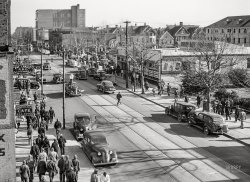
- What This Country Needs: 1906
- ... someone put that "Junction Building" sign on it.
By 1920, the KC Times building had been replaced with the Kay Hotel and it was ... pictures. I see only two in front of the Junction ticket office.
R.R. ticket offices The Chicago & Alton, Missouri Pacific, ... Posted by Dave - 08/20/2012 - 10:49am -
![What This Country Needs: 1906 Kansas City, Missouri, circa 1906. "Junction of Main and Delaware Streets." 8x10 inch dry plate glass negative, Detroit Publishing Company. View full size.
A Good Five-Cent CigarOf course, only to hold off the chill of what appears to be a frosty day!
Old city streetsI love these old street scenes you select. My grandfather who was born in 1880's had lots of old sayings that meant little to us grandkids. One was "it's everywhere like horseshit." These old photos almost always include somebody sweeping it up. Now I know what he meant.
The Junction.This intersection (9th and Main) was known as "The Junction." As you might have guessed from the signs.
That's the Kansas City Times newspaper building in the middle, with the spire thing on top, even though railroad ticket offices were on the first floor and someone put that "Junction Building" sign on it.
By 1920, the KC Times building had been replaced with the Kay Hotel and it was that building that eventually fell to urban renewal in the 60s.
[Note the faint T on the roof of the Times tower. - Dave]
Vertiginous EgressThat cast iron spiral fire escape on the building with the beehive dome was probably thought safe enough at the time, but, after only a few moments of imagining using it in an emergency, I'm all ready for a nice lie-down in a dark room.
Wells Fargo, and lunch to goWells Fargo wagon to the left (Express!) and the fellow with the apron across the street selling sandwiches from the looks of it (it IS 25 past 1, after all!)
ManvilleI looked over this carefully and I can't see any women at all, out shopping or on the street! It truly was a man's world.
Long gone.I-70 would eventually pass a couple of blocks in the distance and all these buildings were gone by then to make way for urban renewal and ramps down to the interstate. Everything probably went down by 1960 or so.
Kansas City has its share of remaining historic buildings but all the buildings in this photo are long gone.
The Commerce (Bank) Tower is currently on the corner (9th and Main) just beyond Palace Clothing. It went up in 1965 as the area was redeveloped into parking lots, parking garages and your typical 60s era highrises.
My mother was working near this location in the early 1950s and she was still using the streetcars (the more modern versions) then. Streetcar service ended by 1957.
Everything's up to date in Kansas City"They gone about as fer as they can go
They went an' built a skyscraper seven stories high
About as high as a buildin' orta grow."
Horses back thenHad a lot to watch out for, didn't they?
Downward SpiralIn about the middle of the photo, towards the back, there seems to be a spiral staircase fire escape. I don't believe I have ever seen one like this.
Ladies of the AfternoonWhat I continue to find amazing are the lack of women in these downtown type pictures. I see only two in front of the Junction ticket office.
R.R. ticket officesThe Chicago & Alton, Missouri Pacific, Santa Fe, Milwaukee Road, Wabash, and a joint office of the Frisco and, I think, the Rock Island.
Nothing left?A tour up Delware to Main on Google Street view shows that there is nothing of this scene left except for the names of the thoroughfares. It's all a flat expanse of 4- and 6-lane asphalt, empty lots. and what look like low-rise warehouses. Automobiles roam, supreme in the environment.
This gives me hope. Perhaps in another century, the auto will be as rare on our city streets as the horse is today.
What this commenter needsA Stetson hat and five-cent cigar make for a winning combination.
MessengerThere's a messenger boy on the lower right, no doubt hurrying to the red light district. Quick, call Lewis Hine!
Kay Hotel demolished... in 1954, according to the Kansas City Public Library, which has a few more pictures of this intersection in its images archives.
Dave, I love Shorpy!
IncredibleThe detail on the lamp standards, fire hydrants &c is wonderful. I'm terribly curious about what appears to be a pedestrian bridge in the background -- does anyone know what it might have connected?
(The Gallery, DPC, Kansas City, Stores & Markets, Streetcars)](https://www.shorpy.com/files/images/4a13233a.thumbnail.jpg)
- Mark of Zorro: 1921
- ... La Motte as the love interest. It debuted on December 5, 1920.
Also on the bill (in the pictures in the stand to the left of the box office) is a Roscoe "Fatty" Arbuckle short. Can't read the title even blowing ... Posted by Dave - 08/07/2012 - 2:20am -
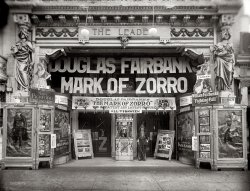
- Miss Louise Johnson: 1920
- Miss Louise Johnson, from 1920. Her somewhat damaged appearance is maybe appropriate since the Shorpy Mid-Atlantic office is just coming back online after an agonizingly long Internet outage. ... Posted by Dave - 09/08/2011 - 1:37pm -
